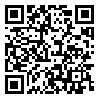Volume 21, Issue 61 (6-2021)
jgs 2021, 21(61): 429-445 |
Back to browse issues page
Download citation:
BibTeX | RIS | EndNote | Medlars | ProCite | Reference Manager | RefWorks
Send citation to:



BibTeX | RIS | EndNote | Medlars | ProCite | Reference Manager | RefWorks
Send citation to:
habibi M, mojtabazadeh H. (2021). Exploring the Mechanisms of Understanding Islamic City among the Citizens of District 20 in Tehran Using Structural Equation Modeling. jgs. 21(61), : 23 doi:10.52547/jgs.21.61.429
URL: http://jgs.khu.ac.ir/article-1-3604-en.html
URL: http://jgs.khu.ac.ir/article-1-3604-en.html
1- Urban Planing, Tehran Center, Islamic Azad University, Tehran, Iran
2- Urban Planing, Tehran Center, Islamic Azad University, Tehran, Iran ,hosein.mojtabazadeh@gmail.com
2- Urban Planing, Tehran Center, Islamic Azad University, Tehran, Iran ,
Abstract: (7970 Views)
A review of the history of the Islamic period reveals that concepts such as Islamic values and principles have always been one of the foundations of Islamic cities. This has made the Islamic city a space for the development of other Islamic fundamental concepts and principles. However, with the emergence of modern thinking and the emergence of numerous movements, we have seen that many of these are distorted. considering the historical background, values and factors present, district 20 in Tehran, is of no exception. In this regard, the purpose of this study is to investigate the mechanisms of how each of the factors of the Islamic city influence the perception of the inhabitants of this historical district of Tehran. To achieve this goal, a conceptual model of the research was first developed using the literature as well as the research context in which the three main physical, social and validity dimensions were considered for Islamic urban planning. Subsequently, using a questionnaire survey and its analysis by structural equation modeling, the effect of each of these factors on their indicators was put forth as the research findings. The results of the analysis indicate that the "validity" factors have the most impact on people's perception of the Islamic city, while the "social and civil" and "physical" factors are less influential.
Article number: 23
Keywords: Urban Reading, Islamic City, Perception, Validity Factors, District 20, Structural Equation Modeling.
Type of Study: Research |
Subject:
Geography and Urban Planning
Send email to the article author
| Rights and permissions | |
 |
This work is licensed under a Creative Commons Attribution-NonCommercial 4.0 International License. |

This work is licensed under a Creative Commons — Attribution-NonCommercial 4.0 International (CC BY-NC 4.0)






